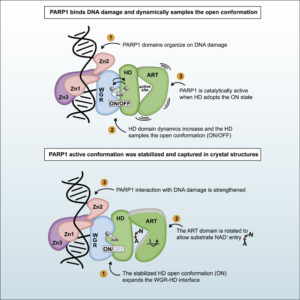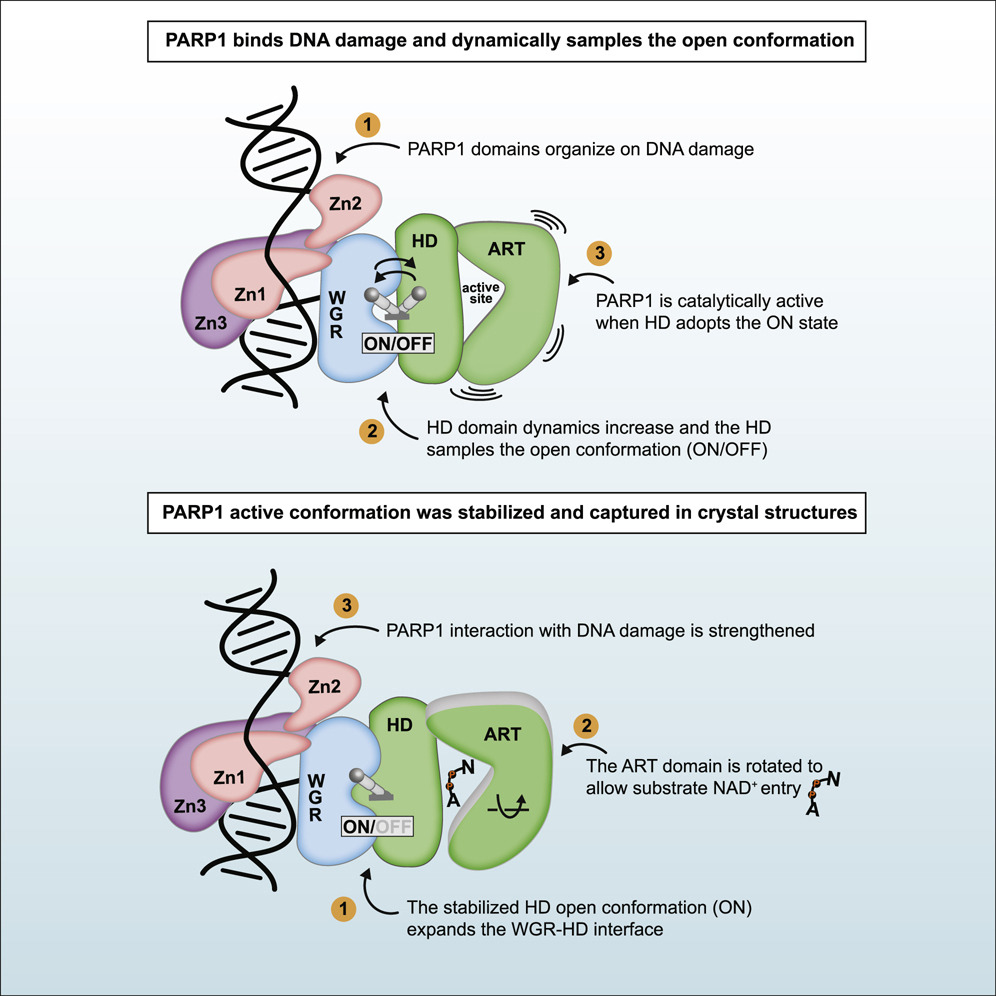PARP1 is an enzyme that senses DNA damage and sends a cellular signal to carry out repair. It has been found to be upregulated in several carcinomas and inhibiting its activity—thereby disrupting DNA replication and repair—has been shown to repress tumor growth and metastasis. PARP1 has also emerged as a promising therapeutic target for Alzheimer and Parkinson diseases, where attenuating the enzyme’s hyperactivity can help cells survive.

To better understand the regions of PARP1 that various inhibitors attack, a team of researchers from the Université de Montréal and the Institute of Cancer Research in the UK recently captured the first snapshot of the enzyme in the active state it adopts after detecting DNA damage. The X-ray diffraction data that yielded these insights was obtained using beamline 8.3.1 at the Advanced Light Source and the CMCF beamline at the Canadian Light Source.
The research, published in the journal Molecular Cell, suggests that whether or not a particular PARP1 inhibitor engages a highly dynamic region of the enzyme may determine if its better suited for killing cells as a cancer treatment, or preserving them as a neurodegeneration therapy.
Read more from the Canadian Light Source.




